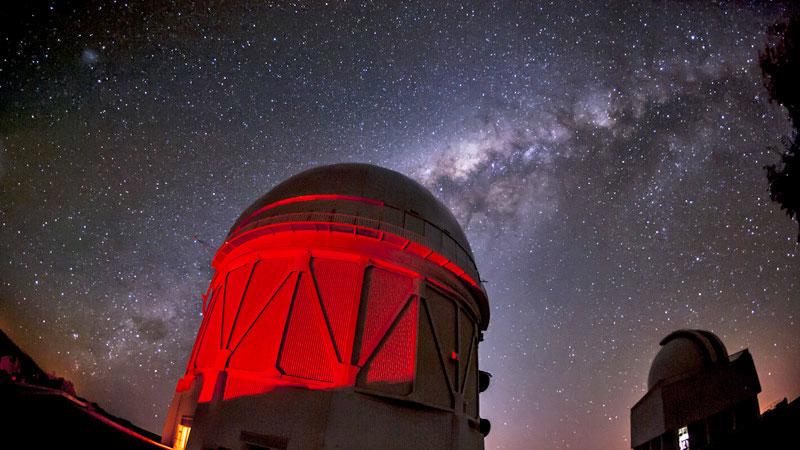DECam
Latest

Dark energy tests prove science is right about the universe
The results are in: As best we can tell, the universe clumps and expands just how we thought it did. That confirmation comes from the first results of a five-year survey wherein researchers took dark energy into account, observing much more recent cosmic activity than previous methods allowed. The new method: Strapping a 570-megapixel camera to a 4-meter telescope in the Chilean mountains and snapping photos of light streaming across space from as far back as 7 billion years ago.

DECam: Gazing deep into the final frontier in search of dark energy
The National Optical Astronomy Observatory (NOAO) puts it into perspective right away: "Eight billion years ago, rays of light from distant galaxies began their long journey to Earth." It's important to hold that fact in mind, as we marvel at the first images from deep in the belly of our universe to arrive from the Chile-based Dark Energy Camera (DECam). As that name might suggest, peering at remote galaxies for purely visual gratification isn't the camera's primary purpose. The result of eight years of planning and hard work, involving engineers and scientists from three continents, the DECam is mounted on the Victor M. Blanco Telescope at the Cerro Tololo Inter-American Observatory in Chile. Sitting atop a 7,200-foot mountain, the camera is part of the Dark Energy Survey, which intends to gather information on over 300 million galaxies. The goal is to better understand dark energy -- a concept that represents our best explanation for why the universe's rate of expansion is speeding up, rather than slowing due to gravity. Gaze past the break for the background on the project.

